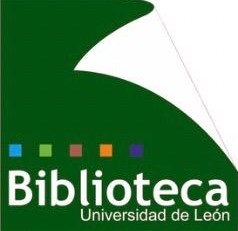Compartir
Título
Estimation by flow cytometry of percentages of survival of Listeria monocytogenes cells treated with tetracycline, with or without prior exposure to several biocides
Autor
Facultad/Centro
Área de conocimiento
Título de la revista
Food Microbiology
Cita Bibliográfica
Rodríguez-Melcón, C., Serrano-Galán, V., Capita, R., & Alonso-Calleja, C. (2023). Estimation by flow cytometry of percentages of survival of Listeria monocytogenes cells treated with tetracycline, with or without prior exposure to several biocides. Food Microbiology, 112(104210), 104210. https://doi.org/10.1016/j.fm.2022.10421
Editorial
Elsevier
Fecha
2023
ISSN
0740-0020
Resumen
[EN] In certain circumstances, disinfectants are used at sublethal concentrations. The aim of this research work was to determine whether contact of Listeria monocytogenes NCTC 11994 with subinhibitory concentrations of three disinfectants widely used in food processing environments and in the health-care system, benzalkonium chloride (BZK), sodium hypochlorite (SHY) and peracetic acid (PAA), can cause the adaptation of the strain to the biocides and increase its resistance to tetracycline (TE). The minimum inhibitory concentrations (MIC; ppm) were 2.0 (BZK), 3500.0 (SHY) and 1050.0 (PAA). On exposure to increasing subinhibitory concentrations of the biocides, the maximum concentrations (ppm) of the compounds that allowed the strain to grow were (ppm) 8.5 (BZK), 3935.5 (SHY) and 1125.0 (PAA). Both the control cells (non-exposed) and the cells that had been in contact with low doses of biocides were treated with different concentrations of TE (0 ppm, 250 ppm, 500 ppm, 750 ppm, 1000 ppm and 1250 ppm) for 24, 48 and 72 h, and the survival percentages determined using flow cytometry, following dying with SYTO 9 and propidium iodide. The cells previously exposed to PAA presented higher survival percentages (P < 0.05) than the rest of the cells for most of the concentrations of TE and treatment times trialled. These results are worrying because TE is sometimes used to treat listeriosis, highlighting the importance of avoiding the use of disinfectant at subinhibitory doses. Furthermore, the findings suggest that flow cytometry is a fast and simple technique to obtain quantitative data on bacterial resistance to antibiotics.
Materia
Palabras clave
Peer review
SI
ID proyecto
- info:eu-repo/grantAgreement/AEI/Programa Estatal de I+D+i Orientada a los Retos de la Sociedad/RTI2018-098267-R-C33/ES/ALTERNATIVAS AL USO DE DESINFECTANTES EN LA INDUSTRIA ALIMENTARIA DIRIGIDAS A REDUCIR LA SUPERVIVENCIA DE LISTERIA MONOCYTOGENES Y SALMONELLA ENTERICA SOBRE LAS SUPERFICIES
- Junta de Castilla y León/LE018P20
- Universidad de León /18BB282
URI
DOI
Aparece en las colecciones
- Artículos [4641]
Ficheros en el ítem
Tamaño:
9.599
xmlui.dri2xhtml.METS-1.0.size-megabytes
Formato:
Adobe PDF















